Warren Feeney – 18 May, 2017
As a body of work of limited success, it is interesting to remember how Peebles moved on from these constructions, retaining aspects of their geometry but returning to more painterly and evocative images by the late 1970s; loose painted canvases, charcoal and works on paper. Peebles' constructed reliefs represent a sustained period of exploration, something that he needed to undertake, finding his way towards a pure abstraction that he could call his own.
Christchurch
Don Peebles
Don Peebles: Relief Constructions
Curated by Peter Vangioni
8 April - 3 September 2017
Since its re-opening in December 2015, the Christchurch Art Gallery’s exhibition programme has given substantial attention to its permanent collection and the work of artists with an association with Christchurch and Canterbury. Currently, it has five solo exhibitions of local artists’ work: Bill Sutton’s Te Tihi o Kahukura: The Citadel of Kahukura; Carl Sydow’s Sydow:Tomorrow Never Knows; Wayne Youle’s Look Mum No Hands; expatriate Francis Upritchard’s Jealous Saboteurs and Don Peebles: Relief Constructions.
Although some critics have expressed concern about the implicit parochialism of such programming, the gallery’s enthusiasm for its collection and its artists has a genuine excitement about it with curators bringing recent acquisitions and seemingly forgotten paintings, objects and items out of storage and making new and unexpected associations between them and more familiar works. Sutton’s Te Tihi o Kahukura and Sky, 1976, brings together previously unseen working drawings by the artist for a large-scale Port Hills landscape. Sydow: Tomorrow Never Knows is a concise and lively survey of works by New Zealand’s most inventive Op and Pop artist, while the inclusion of early works, alongside new installations and paintings by Wayne Youle in Look Mum No Hands, makes for an exhibition overflowing with ideas, possibly capable of sustaining his practice for another twenty years.
And then there is Don Peebles: Relief Constructions, a survey of early geometric abstract assemblages by the artist undertaken in London following his arrival as the recipient of the Association of New Zealand Arts Societies’ Fellowship Award in 1960 (1). The origins of these Constructivist-inspired works have been documented by the artist and others as a road to Damascus experience. Prior to arriving in Britain, Peebles had exhibited his first significant paintings, The Wellington Series, 1959, a body of work that made a decisive move towards abstraction, while also maintaining an association with the real world in its reference to the capital city as its subject. However, while reading The Sunday Times in London, Peebles found an article by British abstract artist, Victor Pasmore, advocating pure abstraction through the use of ‘real materials in real space.’ (2)
From 1961 Peebles completed numerous relief constructions, not only in London over a period of two years, but also back in New Zealand through to the mid-1970s, their unembellished forms and surfaces in hardboard, timber and Perspex replacing canvas and paint (3), tracing their lineage, (like Pasmore’s abstract assemblages), back to Russian Constructivism.
In 2017, it is difficult to imagine how comprehensively modern and international these works once looked; their economy of intention, geometry and integrity as abstract works of art was only shared by Ralph Hotere and Milan Mrkusich, and Peebles’ relief constructions in the mid-1960s, looked far more challenging. (Where had all that paint on canvas gone?)
A sense of Peebles‘ ‘radicalism’ is, to some extent, still apparent looking at the reproduction of Relief Construction: yellow and black, 1966, in Gordon H. Brown and Hamish Keith’s An Introduction to New Zealand Painting 1839 - 1967, published in 1969. Reproduced in the chapter, ‘Contemporary Developments,’ Peebles’ assemblage, even now, manages to disrupt the flow of the publication’s narrative. As the first comprehensive survey of the country’s painting, An Introduction to New Zealand Painting 1839 - 1967 may begin as a history, tracked by an argument about its distinctly local qualities, but such intentions are confronted and confounded by the internationalism of Relief Construction: yellow and black (4). Its diagonally placed yellow and black square positioned off-centre to the right of the expansive white plane that frames it ensures that Relief Construction: yellow and black is the highlight of the Christchurch Art Gallery’s current exhibition.
Yet, although it acts as the perfect introduction, there are really only four or five other assemblages out of the fifteen selected that provide adequate representation of the best qualities of this series. While in addition to its successes, the exhibition also highlights the limitations of these works, yet this is equally enlightening about the importance of these relief constructions to Peebles’ practice. He has been cited on many occasions about the approach he adopted towards his work when he arrived in London: ‘One of the good things that happened… was the realisation that I was there to learn…. It was time in which I could let myself go. Experiment.’ (5) Like any aspiring modernist he fully embraced this principle, restating its sentiment on numerous occasions: ‘I want to be almost totally out of my depth all the time… swimming to the surface, not floating on top and gradually sinking.’ (6)
This idea of risk-taking as modernism’s prime directive is a notion that holds the exhibition and Peebles’ relief constructions to account. He remained essentially a painter throughout this period, (as opposed to being a constructivist designer/sculptor), an artist better dealing with the two dimensional surfaces of paper or canvas, and colour and paint. In many of the works in Don Peebles: Relief Constructions, spatial relationships tend to be given a cursory consideration, while, true to form, there is a sense of visual resolution to an image like Relief Drawing, 1962, a painted relief in which the essential flatness of surfaces possesses a certainty which is generally absent from other works.
Comparisons with Pasmore’s relief constructions are similarly revealing; less busy or fussy than Peebles’ assemblages in their orchestration of forms and the complex nature of their geometric structures. Pasmore gave the shapes and gaps in his works room to move, with a greater sense of the spaces between forms as being as significant as the forms themselves.
In contrast, Peebles’ Construction, 1964 and Relief Construction, 1966, seem spatially ill-considered. The tightly clustered vertical shapes in Relief Construction that push forward from the picture plane, unnecessarily detach themselves visually from any potentially interesting relationships with the spaces inside the borders they are measured and framed by. The predominant black forms in Construction, 1964, may be establishing an animated visual conversation with one another, yet they sit awkwardly exposed and disconnected from the picture plane that they occupy.
Neither are these or any of the other works in Don Peebles: Relief Constructions improved by the gallery lighting. Where attention should be predominantly focussed on the hard-edged geometry of forms in relief advancing and receding in space, the definition and clarity around these objects and their component parts is compromised by the diffuse shadows cast within each assemblage and by the dominant shadows that sit below the ridges of the frames of these constructions.
As a body of work of limited success, it is interesting to remember how Peebles moved on from these constructions, retaining aspects of their geometry but returning to more painterly and evocative images by the late 1970s; loose painted canvases, charcoal and works on paper. Peebles’ constructed reliefs represent a sustained period of exploration, something that he needed to undertake, finding his way towards a pure abstraction that he could call his own. Possibly inadvertently, but no less thankfully, the exhibition gives due attention to - and a tangible sense of - the demands that the artist had set himself. As a gallery experience informed by its successes and misadventures, Don Peebles: Relief Constructions may best be considered as a period of transition, and this should be taken as an apt and no less complementary description of this series within the artist’s practice.
Warren Feeney
(1) Justin Paton, Don Peebles The Harmony of Opposites, Christchurch: Robert McDougall Art Gallery, 1996, p. 17
(2) Paton, pp. 17 -18
(3) Peter Vangioni, ‘Don Peebles A Free Sense of Order,’ B. 187, Christchurch: Christchurch Art Gallery, Autumn 2017, p. 28
(4) Gordon H. Brown and Hamish Keith, An Introduction to New Zealand Painting 1839 - 1967, Auckland: Collins, 1969, p. 170
(5) Vangioni, p. 27
(6) Vangioni, p. 30
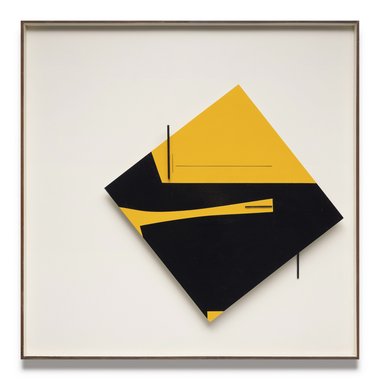
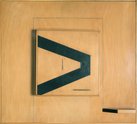
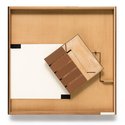

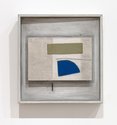
 Advertising in this column
Advertising in this column Two Rooms presents a program of residencies and projects
Two Rooms presents a program of residencies and projects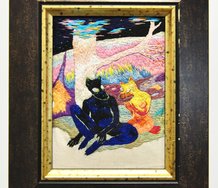
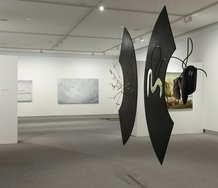
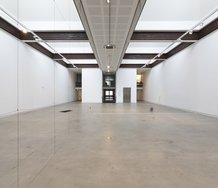

This Discussion has 0 comments.
Comment
Participate
Register to Participate.
Sign in
Sign in to an existing account.